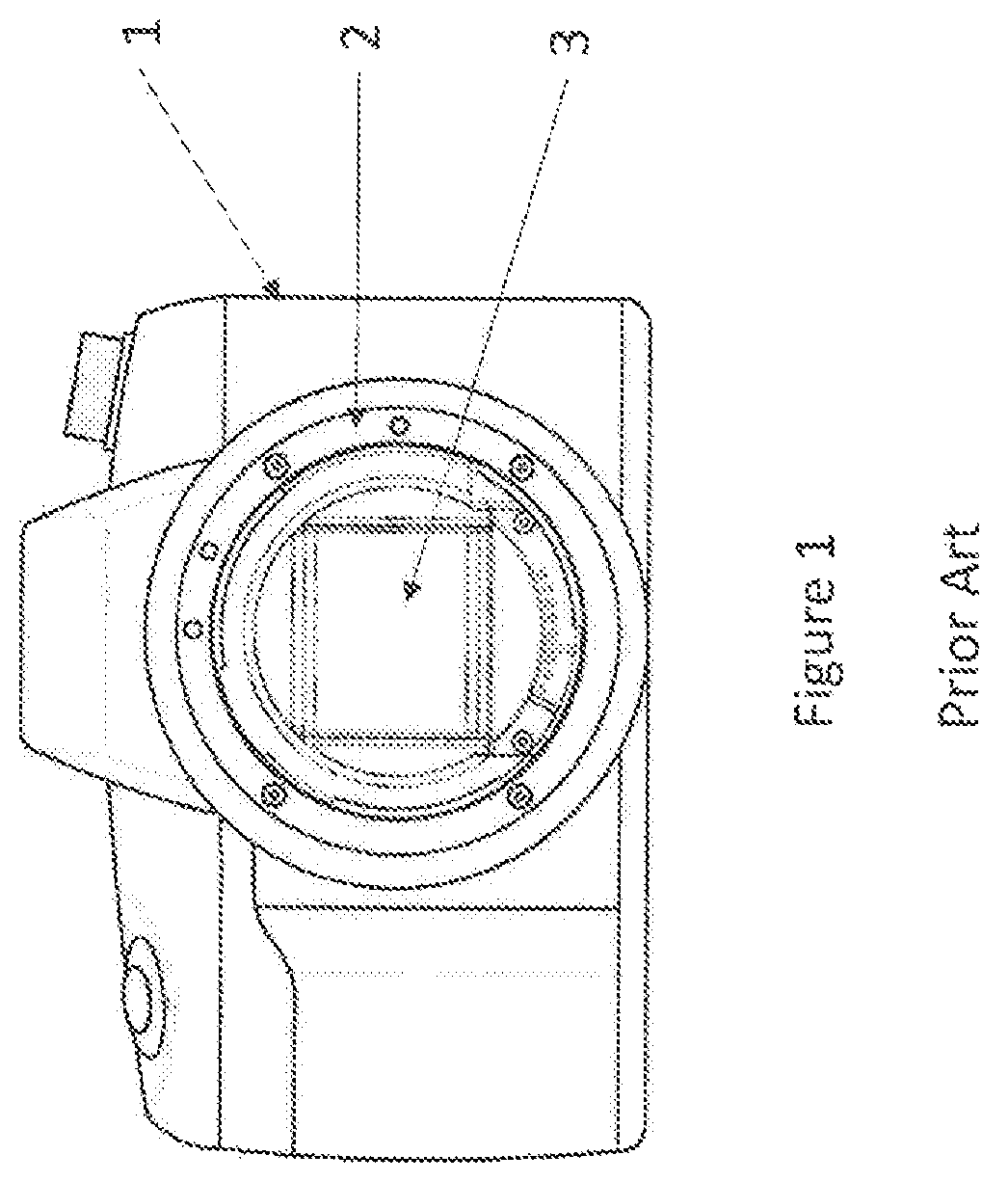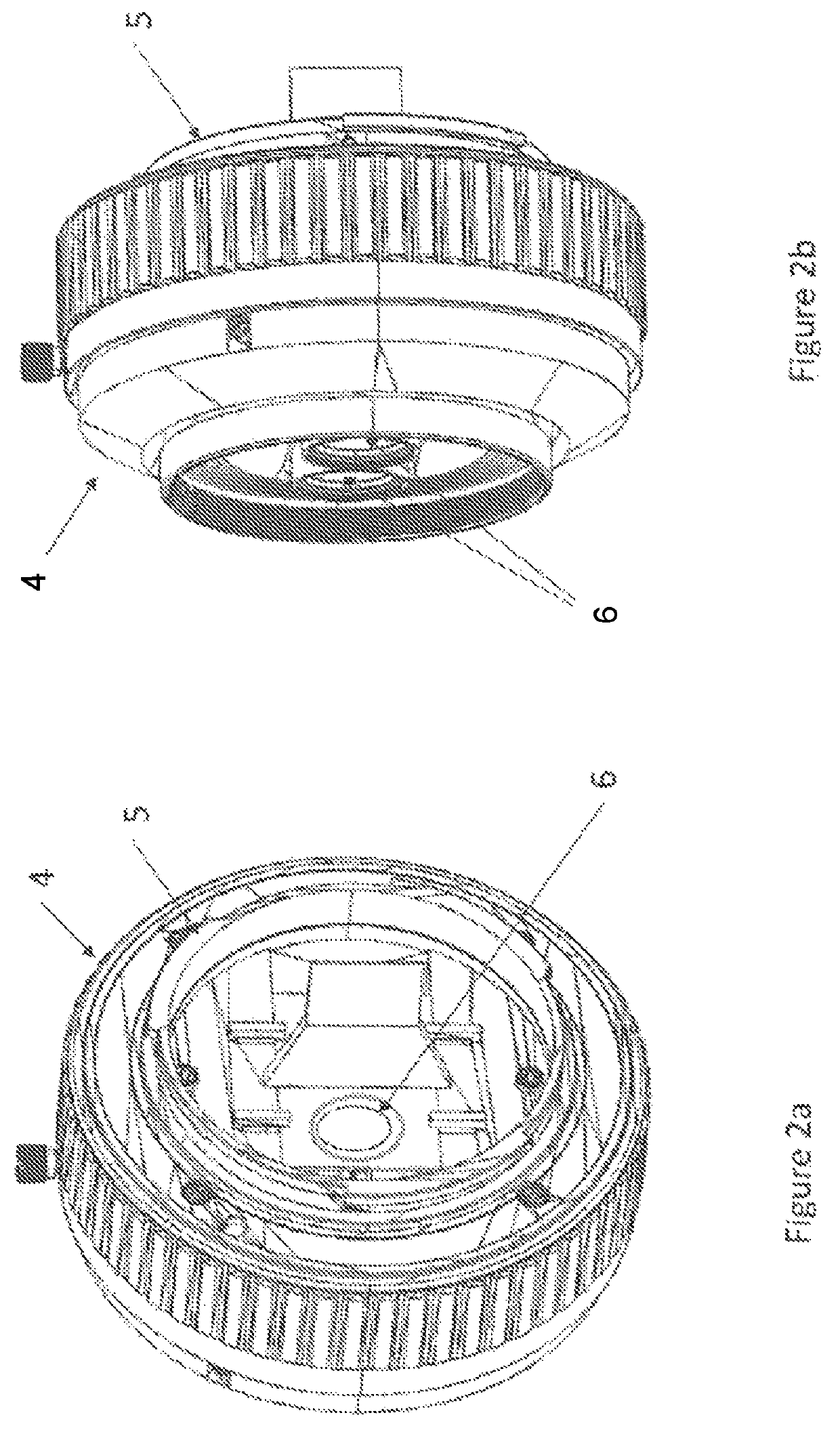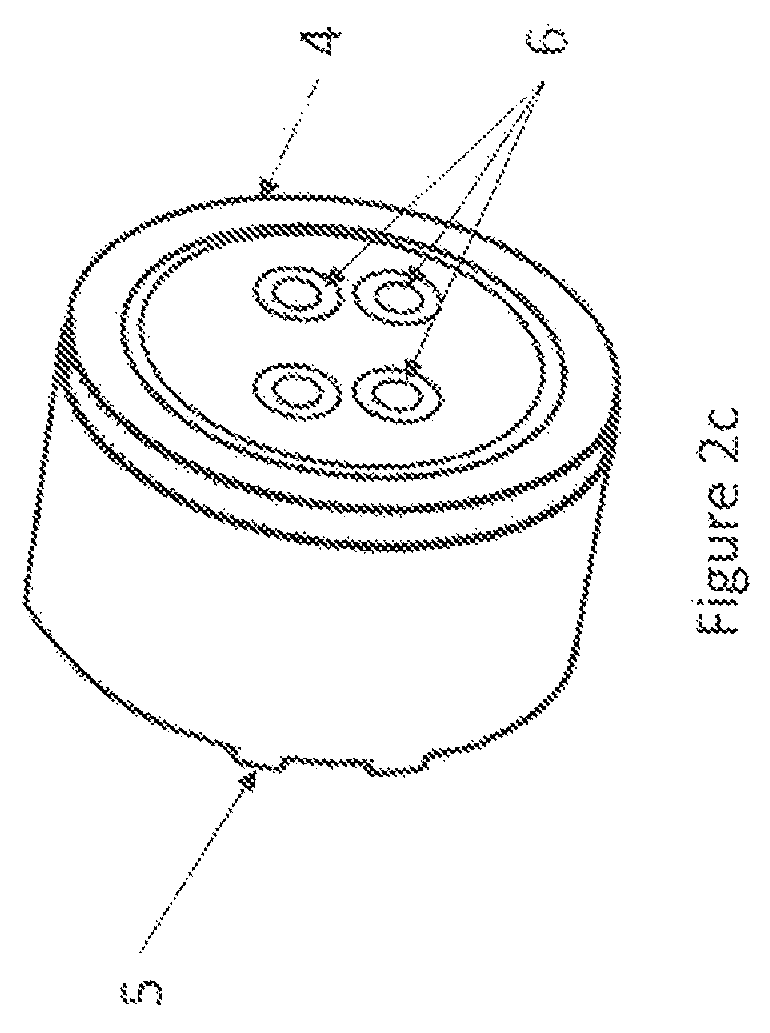Multispectral imaging apparatus
a multi-spectral imaging and apparatus technology, applied in the field of cameras, can solve the problems of limiting the passage of the visible (vis) spectrum from about 400 nm to 700 nm, not allowing the capture of more than three distinct bands, and high cost, and presenting a barrier for many
- Summary
- Abstract
- Description
- Claims
- Application Information
AI Technical Summary
Benefits of technology
Problems solved by technology
Method used
Image
Examples
Embodiment Construction
The present invention relates to an interchangeable multi-spectral imaging lens-compound for a digital camera that has an interchangeable lens mount. The lens-compound includes a body with a single mount connecting ring and at least two matching lenses. The lenses are positioned (preferably exactly) in front of the center of the portion of the sensor associated with each lens, according to the number of lenses. The different lenses allow the passage of a plurality, preferably at least four, different bands of light (at least 4 bands for 2 lenses) of the spectrum from NIR to Blue and possibly near UV, thus enabling—by using bandpass filters—sensing of selected bands of defined wavelengths of the spectrum, selected according to the desired application. The lenses are of substantially identical field of view and substantially identical image circle at the sensor plane. The lenses are also of substantially identical focal length and are either positioned at slightly different distances ...
PUM
 Login to View More
Login to View More Abstract
Description
Claims
Application Information
 Login to View More
Login to View More - R&D
- Intellectual Property
- Life Sciences
- Materials
- Tech Scout
- Unparalleled Data Quality
- Higher Quality Content
- 60% Fewer Hallucinations
Browse by: Latest US Patents, China's latest patents, Technical Efficacy Thesaurus, Application Domain, Technology Topic, Popular Technical Reports.
© 2025 PatSnap. All rights reserved.Legal|Privacy policy|Modern Slavery Act Transparency Statement|Sitemap|About US| Contact US: help@patsnap.com



